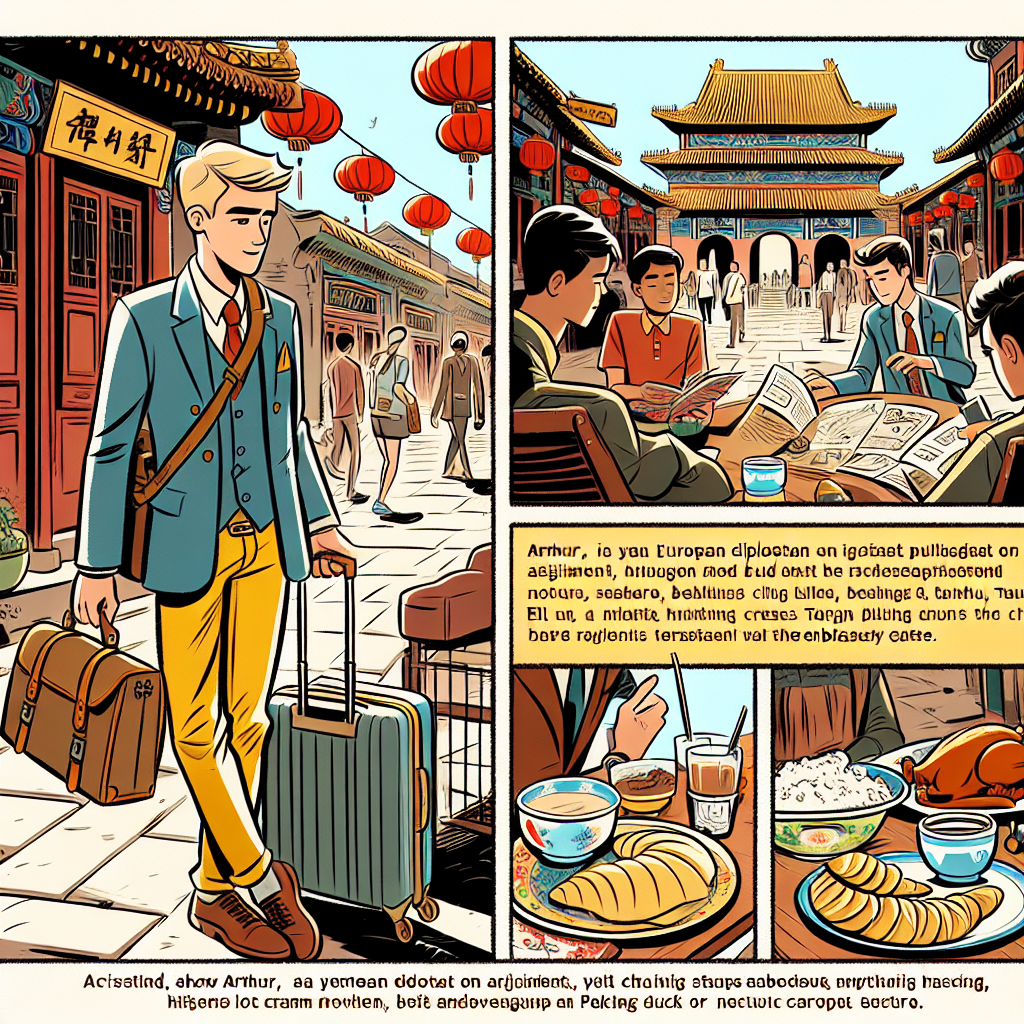Travel notes
Chapter 3: The Diplomat’s Feast: A Culinary Adventure through Hutongs
The day began with the sun casting its first golden rays over the bustling city of Beijing, awakening its ancient streets to the rhythm of modern life. Today, my journey took an intimate turn, delving into the heart of Beijing’s culinary soul nestled within its historic hutongs. The hutongs, a maze of narrow alleys formed by lines of traditional courtyard residences, promised an adventure of flavors and stories.
My first stop was a modest eatery, barely noticeable if not for the locals queued patiently outside. Here, I was introduced to jianbing, a traditional Chinese breakfast crepe known for its savory fillings and crispy texture. Each bite was a blend of warmth, spice, and comfort, encapsulating the morning hustle of the city.
Wandering deeper into the labyrinth, I stumbled upon a tea house that seemed to whisper tales of the past with its ancient wooden doors and paper lanterns. The tea master, with a gentle smile, brewed a pot of pu’er tea, its earthy aroma enveloping the room, transporting me to the mountains of Yunnan.
Lunch was an exploration of flavors at a renowned Peking duck restaurant. The chef, a guardian of his craft, demonstrated the meticulous preparation of the dish, its crispy skin and succulent meat a testament to the culinary mastery that defines Beijing’s food scene.
As the day turned to evening, the hutongs came alive with the glow of red lanterns. My final stop was at a local vendor known for their tanghulu, a traditional snack of candied fruit on bamboo sticks. The sweet crunch against the backdrop of the bustling alley offered a simple yet profound joy, a fitting end to a day of culinary revelations.
Today was not just about tasting food, but about experiencing the community and history that thrives within Beijing’s hutongs. Each meal, each cup of tea, was a dialogue with the past and present, a feast that nourished not just the body but also the soul.
Travel notes:
🍜 **Jianbing Eatery**
– **Description**: Start your day with the traditional breakfast of Beijing, jianbing. A savory crepe filled with warmth and spice.
– **Location**: Nestled within the hutongs, specific location varies as these are often small, local spots. Look for queues of locals for the best spots.
– **Price Range**: $ (Inexpensive)
– **How to get there**: Walking or cycling through the hutongs is recommended to find these hidden gems.
🍵 **Tea House**
– **Description**: Experience the serenity of a traditional tea house, offering pu’er tea and a glimpse into ancient practices.
– **Location**: Hidden within the hutongs, characterized by ancient wooden doors and paper lanterns.
– **Price Range**: $$ (Moderate)
– **How to get there**: Explore the hutongs by foot to discover these tranquil tea houses.
🦆 **Peking Duck Restaurant**
– **Description**: Indulge in the famed Peking duck, a culinary masterpiece showcasing the skill of Beijing’s chefs.
– **Location**: Renowned restaurants are located throughout the city, some nestled in the hutongs.
– **Price Range**: $$$ (Pricey)
– **How to get there**: Public transportation or taxi/ride-sharing services are recommended to reach these renowned establishments.
🍡 **Tanghulu Vendor**
– **Description**: End your culinary adventure with tanghulu, candied fruit on bamboo sticks, from a local vendor.
– **Location**: Found in the bustling evening hutongs, look for the glow of red lanterns.
– **Price Range**: $ (Inexpensive)
– **How to get there**: Best reached by wandering the hutongs in the evening, following the vibrancy of night markets.

